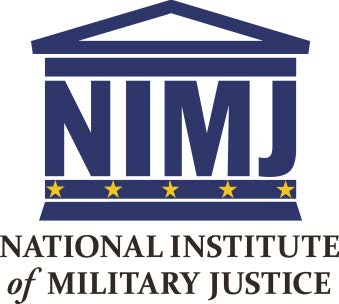Internet), Will Travel
Touch DNA
The Perils of DNA Touch: When Everyday Contact Leaves a Hidden Fingerprint
Our daily lives are a constant exchange of physical interactions. We shake hands, hug loved ones, brush past strangers, and leave traces of ourselves on everything we touch. While this innocuous contact fosters connection and social interaction, it also leaves behind an invisible trace: our DNA. Though DNA technology has revolutionized forensics, the presence of “touch DNA” – tiny amounts transferred through everyday contact – presents a surprising array of challenges and ethical quandaries.
DNA evidence at its apogee: If DNA is found at the scene of a crime the first question other than whose is it is whether that person had ever been in that place. If the DNA is of a stranger, then the DNA found at the crime scene is at its apogee in terms of evidentiary value–it places a suspect in a place he hadn’t been and who had no right to be at that place. Ergo, he not an innocent visitor.
DNA evidence and its nadir (or of least relevance): Imagine the opposite, that DNA is found at the scene of a crime and that contributor has been a visitor in the past (the more recent the better), then the likelihood of his committing the crime based purely on the DNA is insignificant. Any DNA expert will tell you that it is very had to “date” when DNA was deposited. There are situations where that could happen. For example, the crime is committed in the house during the early afternoon, and the evidence shows that the cleaning lady had been in and dusted or polished the surface where the DNA was found. In that situation, prior DNA was likely removed, so any DNA found was likely deposited after the cleaning lady cleaned. In most military sexual assault cases, which your military defense lawyer knows, there has been a lot of contact between the accuser and the accused prior to any alleged assault. Thus, the principle of innocent transference arises.
Locard’s Exchange Principle: Locard is considered one of the forefathers of todays forensic science units–CSI. Dr. Locard, a forensic pioneer, coined the principle: “Every contact leaves a trace.” The concept means that whenever two objects touch, material is exchanged. Criminals unknowingly transfer evidence like hairs, fibers, or DNA from themselves to the scene and vice versa. This exchange becomes silent witnesses, helping investigators reconstruct the crime and identify perpetrators. Though not always perfect, Locard’s principle is a cornerstone of forensic science, guiding scene analysis and evidence collection.
Locard’s principle rings valid with DNA. Microscopic skin cells or fluids transfer whenever two objects touch, leaving DNA traces. A murderer at a crime scene might unknowingly leave hair, skin flakes, or blood, linking them to the event. Similarly, DNA on a dropped object can connect suspects or victims. While microscopic, these traces hold immense power in criminal investigations, solidifying or excluding involvement based on the presence or absence of specific DNA profiles.
A skilled and informed military defense counsel knows how to identify how a sexual assault accuser would have the accused’s DNA on her underwear and even around her sexual parts.
DNA is not infallible: Cynthia M. Cale, Forensic DNA evidence is not infallible. 526 NATURE 611 (2015).
False Accusations and the Blurring of Innocence:
DNA testimony if common in military sexual assault cases. The problems of touch DNA must be studied and researched by military defense counsel in order to properly challenge the relevance and weight of DNA evidence that could fall into the category of touch DNA.
Touch DNA often requires just a few skin cells. That means the problems of DNA transference are of heightened concern. While DNA aids in solving crimes, it also raises the risk of false accusations. An innocent touch on a doorknob or a passing breeze carrying someone’s hair can leave enough DNA to raise suspicion. Imagine being linked to a crime scene simply because you walked past it hours earlier. This potential for false positives jeopardizes individual rights and raises critical concerns about the relevance of such evidence in court.
“Touch DNA” has been criticized as being an unreliable investigatory tool. For example, the Supreme Court of Wyoming, in its opinion rendered May 2016, stated:
Touch DNA
“refers to the ‘possibility that an individual or an object may serve as a conduit between a source and a final destination without any direct encounter.’ David L. Faigman, et al., Modern Scientific Evidence: The Law and Science of Expert Testimony, 4 Mod. Sci. Evidence § 30:13 (2015-2016 ed.). ‘[I]f person A touches person B, and person B touches a pen, person A’s DNA can be found on the pen.’ State v. Carver, 725 S.E.2d 902, 909 (N.C. Ct. App. 2012) (Hunter, J., dissenting), aff’d, 366 N.C. 372 (N.C. 2013). The risk of secondary transfer, combined with the ability to detect even trace amounts of touch DNA, increases the likelihood of misleading or confusing results: Phillips, 49 Wake Forest L. Rev. at 1559.
Bean v. State, 2016 WY 48, ____ P.3d _____ (Wyo. 2016).
Challenges in Interpretation and the Contamination Conundrum:
Touch DNA is often fragile and easily contaminated. Secondary transfer, where DNA moves from one surface to another, complicates matters further. Imagine touching a door handle previously touched by someone else – their DNA could then transfer to your hand and onto another object, creating a misleading trail. These complexities make interpreting touch DNA evidence challenging and necessitate meticulous collection and handling procedures to minimize contamination risks.
Looking Ahead: Towards a Responsible Future:
While touch DNA presents considerable challenges, it also holds potential for positive applications. Identifying missing persons, investigating cold cases, and understanding human behavior in public spaces are just a few examples. However, responsible and ethical considerations must guide these endeavors.
Conclusion: While DNA technology offers remarkable solutions, the perils of touch DNA highlight the need for caution and ethical considerations. Understanding the limitations, implications, and potential misinterpretations is crucial. Responsibly navigating the future of touch DNA requires striking a balance between scientific advancement, individual rights, and the pursuit of justice, ensuring this technology serves society fairly and ethically.
Contact
Cave & Freeburg, LLP, experienced DNA and sexual assault defenders.
(703) 298-9562
cavefreeburg@proton.me
mljucmj@court-martial.com
nathan.freeburg@freeburglitigation.com





